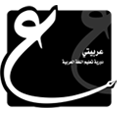Mushtarak Lafzhi Analysis of نظر and its Derivation in Al-Qur’an
Keywords:
Al-Qur’an, mushtarak lafzi, nazara, Roman Jakobson,Abstract
The Qur'an is a book revealed to the Prophet Muhammad in the Arabic language. Arabic was chosen as the language of the Qur'an not only because the Prophet Muhammad was Arab, but also because Arabic has special qualities compared to other languages. According to Ibn Kathir, Arabic is the clearest, most extensive, most eloquent language, and it provides a sense of peace when spoken. Like other languages that experience the phenomenon of a word having multiple meanings, Arabic also has this feature, known as mushtarak lafzi. Mushtarak lafzi creates ambiguity in meanings, making interpretation challenging. Based on this background, this research examines the mushtarak lafzi of the word نظر in the Qur'an. The method used in studying the word نظر is descriptive with a qualitative approach. Data collection techniques include literature study, and the analysis is conducted using semiotic analysis based on Roman Jakobson's semiotic theory. The results of this research show that the word نظر has seven meanings in the Qur'an: to see, to witness, to wait, to observe, to consider, to think, and to view. Similar research has been conducted by Muhammad Ridfan in his thesis titled "The Meanings of the Words Nazara, Basara, and Ra’a in the Qur'an." However, his research focuses on comparing the meanings of the words نظر with رأي and بصر, whereas this study examines the word نظر in terms of its usage to indicate one of its meanings in a specific verse.
References
Fathoni, K. (2020). Metode Penyelesaian Ta’arudh al-Adillah dalam Metodologi Hukum Islam. AL-MANHAJ: Jurnal Hukum Dan Pranata Sosial Islam, 2(1), 45–64. https://doi.org/10.37680/almanhaj.v2i1.309
Hammam. (2020). Analisis Lafadz Musytarak dalam Al-Quran dan Pengaruhnya dalam Tafsir Ahkam. Konfrensi Nasional Bahasa Arab VI, 841–855. http://prosiding.arab-um.com/index.php/konasbara/article/view/738
Hasibuan, A. T., Rosdiana Sianipar, M., Ramdhani, A. D., Putri, F. W., & Ritonga, N. Z. (2022). Konsep dan Karakteristik Penelitian Kualitatif serta Perbedaannya dengan Penelitian Kuantitatif. Jurnal Pendidikan Tambusai, 6(Penelitian Kualitatif), 8690. https://jptam.org/index.php/jptam/article/view/3730
Hendri Nuriskandar, L. (2021). PERBANDINGAN METODE PEMBUKTIAN SECARA QARINAH DI TERENGGANU (MALAYSIA) DAN ACEH (INDONESIA). Jurnal Darussalam: Pemikiran Hukum Tata Negara Dan Perbandingan Hukum, 1(2), 150–166. https://ejournal.stisdarussalam.ac.id/index.php/jd%0A
Jufri, S., Sari, E. D., & Nurkhasanah, R. F. (2023). Analisis Ambiguitas Makna yang Terkandung dalam Al-Qur’an Surah Al-Baqarah. Ad-Dhuha: Jurnal Pendidikan Bahasa Arab Dan Budaya Islam, 4(1), 59–67.
Kamilah, I. F., Khanifah, N., & Faizin, M. (2023). Teknik Berpikir Tingkat Tinggi Melalui Logika Induktif Dan Deduktif Perspektif Aristoteles. Journal Genta Mulia, 15(1), 131–145. https://ejournal.stkipbbm.ac.id/index.php/gm
KBBI. (n.d.-a). Retrieved May 17, 2024, from https://kbbi.kemdikbud.go.id/entri/bisa
KBBI. (n.d.-b). Retrieved May 20, 2024, from https://kbbi.web.id/konteks
KBBI. (n.d.-c). Retrieved May 20, 2024, from https://kbbi.kemdikbud.go.id/entri/menyaksikan
Kinanti, K. P., & Astuti, E. S. (2021). ANALISIS KOMPONEN MAKNA KATA BERMAKNA ‘ MELIHAT ’ DALAM A . PENDAHULUAN Kata bermakna ‘ melihat ’ dalam bahasa Indonesia dan bahasa Jawa memiliki beragam variasi . Kata ‘ melihat ’ secara umum dijelaskan sebagai hal mengetahui sesuatu melalui indra mata . 10(3), 210–224.
Musthafa, I., & Hermawan, A. (2018). Metodelogi Penelitian Bahasa Arab (Pertama (Ed.)). Rosda.
Nandang, A. (2020). Semantik Bahasa Arab. Media Jaya Abadi.
Nugraha, E. F. (2022). The Form and Meaning of Nahyi In The Quran Surah Al-Baqarah: A Review Of Roman Jakobson’s Semiotics. Lughwiyah, 4(2), 139.
Nurjanah, N. E., & Mukarromah, T. T. (2021). Pembelajaran Berbasis Media Digital pada Anak Usia Dini di Era Revolusi Industri 4.0 : Studi Literatur. Jurnal Ilmiah Potensia, 6(1), 66–77.
Pakaya, N. A. (2022). Al-Musytarak al-Lafẓī; Analisis kata Hisāb dalam Surat al-Nūr. `A Jamiy : Jurnal Bahasa Dan Sastra Arab, 11(2), 464. https://doi.org/10.31314/ajamiy.11.2.464-472.2022
Pamungkas, M. I., & Hadi, A. (2022). تطبيق نظرية “Code-Message” لرومان جاوكبسون في تعيين معاني الأمر والنهي في الآيات الكريمة من القرأن الكريم. Ta`lim Al-`Arabiyyah: Jurnal Pendidikan Bahasa Arab & Kebahasaaraban, 6(1), 52–65. https://doi.org/10.15575/jpba.v5i2.
Robikah, S. (2021). Rekonstruksi Kisah Ratu Balqis dalam Perspektif Tafsir Maqashidi. Jurnal Al-Wajid, 2(1), 341–363. https://jurnal.iain-bone.ac.id/index.php/alwajid/article/view/1669
Ruslan, R. (2022). Kandungan Hukum Islam Dalam Ayat-Ayat Mutasyabihat. Journal of Islamic and Law Studies, 6(1), 35–44. https://doi.org/10.18592/jils.v6i1.6829
Saifullah, M., Mukhtar, M., R, R., Mahmud, B., & Hamzah, H. (2021). Ragam Makna Harf Jar Dalam Surah Al-Sajadah (Suatu Analisis Sintaksis). Loghat Arabi : Jurnal Bahasa Arab Dan Pendidikan Bahasa Arab, 2(1), 1. https://doi.org/10.36915/la.v2i1.19
Salida, A., & Zulpina. (2023). Keistimewaan Bahasa Arab sebagai Bahasa Al-Quran dan Ijtihadiyyah. 1(1).
Santoso, D. (2020). Pemikiran Imam Syafi’i tentang Ketentuan Quru’ dalam Surat Al Baqarah Ayat 228 dan Relevansinya. Mabahits : Jurnal Hukum Keluarga, 4(01), 13–28.
Setyawan, M. Y. (2022). Urgensi Makna Kontekstual (Dalālah Siyāqiyyah) dan Teori Kontekstual (Naẓariyyah al-Siyāq) dalam Penelitian Semantik. Insyirah: Jurnal Ilmu Bahasa Arab Dan Studi Islam, 5(1), 26–38. https://doi.org/10.26555/insyirah.v5i1.5156
Syafirin, M. (2020). The Meaning of Shalat in Al-Qur’an : Semantic Analysis of Toshihiko Izutsu Makna Ṣalat dalam Al-Qur’an : Analisis Semantik Toshihiko Izutsu. Alif Lam, 01, 10–20.
Syamsurijal, S., Hitami, M., & M. Yusuf, K. (2023). Analisis Kisah Nabi Ibrahim dalam al-Qur’an Perspektif Pendidikan. Al-Mutharahah: Jurnal Penelitian Dan Kajian Sosial Keagamaan, 20(1), 124–139. https://doi.org/10.46781/al-mutharahah.v20i1.726
Taufiq, W. (2017). Semiotika Untuk Kajian Sastra Dan Al-Qur’an. Yrama Widya.
Yusuf, M., & Solehuddin, S. (2023). Kajian Semiotika Jacobson terhadap Dialog Nabi Ya ’ qub dan Nabi Yusuf dalam Surat Yusuf. Mashadiruna;MJurnal Ilmu Al-Qur’an Dan Tafsir, 2(1), 31–40. https://doi.org/10.15575/mjiat.v2i1.23779
الاخضري, ع. ا. (2017). الجوهر المكنون في صدف الثلاثة الفنون (p. 41). مركز البصائر للبحث العلمي.
الرائد. (n.d.). Retrieved May 19, 2024, from https://www.almaany.com/ar/dict/ar-ar/نظر/?c=الرائد
المعجم الوسيط. (n.d.). Retrieved May 18, 2024, from https://www.almaany.com/ar/dict/ar-ar/نظر/?c=المعجم الوسيط
قدور, أ. م. (1999). مدخل إلى فقه اللغة العربية. دار الفكر بدمشق.
محمد, ج. ا., & عبد الرحمن, ج. ا. (2022). تفسير الجللالين. CV.Pustaka Assalam.
Downloads
Published
Issue
Section
License
Copyright (c) 2024 Sandi Aryawan, Dedi Wahyudi, Muhammad Ibnu Pamungkas, Ahmed Khalid Mohammad (Author)

This work is licensed under a Creative Commons Attribution-NonCommercial-ShareAlike 4.0 International License.







